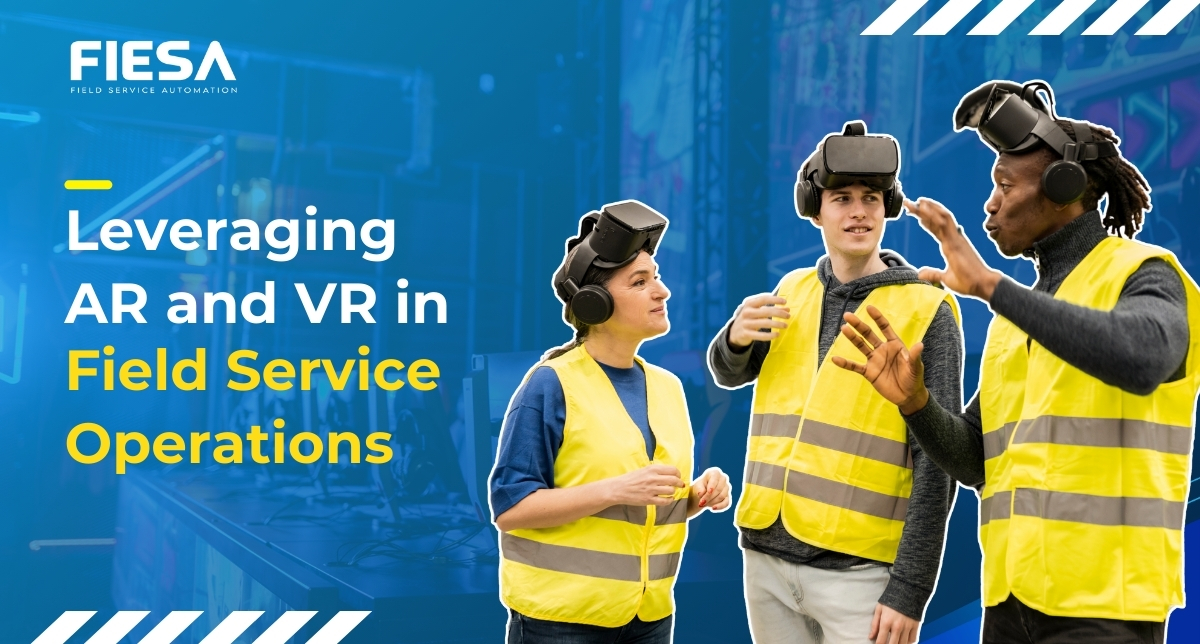
The field service operations are evolving rapidly, driven by the need for faster response times, improved customer satisfaction, and operational efficiency. In this transformation, immersive technologies like Augmented Reality (AR) and Virtual Reality (VR) are emerging as powerful tools. By leveraging AR and VR in field service, companies can empower technicians, optimize workflows, and reduce downtime – all while delivering superior service.
What Is AR and VR Technology?
Augmented Reality overlays digital content – such as instructions, diagrams, or live video – onto the real world, typically through smartphones, tablets, or smart glasses. In contrast, Virtual Reality immerses users in a fully simulated environment, often used for training or scenario-based simulations. When integrated into field service operations, AR and VR enable a more intelligent, responsive, and scalable support system.
The Growing Role of AR in Field Service Operations
AR is becoming a cornerstone in modern field service delivery. Technicians equipped with AR smart glasses or tablets can view step-by-step repair guides, safety alerts, and 3D schematics directly overlaid on machinery or equipment. This AR-powered maintenance capability minimizes errors and reduces dependency on printed manuals or prior on-site experience.
For instance, a telecommunications company might use AR to assist technicians installing fiber lines. The technology ensures each step is executed correctly, even by junior staff, while enabling centralized oversight from remote experts.
Enhancing Technician Training with VR
Training field service technicians has traditionally been resource-intensive, requiring real equipment, travel, and supervision. Virtual Reality is transforming this model by creating immersive, hands-on simulations that mirror real-world challenges. With VR field technician training, companies can simulate complex repair procedures, hazardous conditions, and customer interaction scenarios in a safe, controlled setting.
This approach not only improves skill retention but also accelerates onboarding for new hires, reducing the time and cost required for field-readiness.
How AR Enables Real-Time Remote Assistance?
One of the most impactful applications of AR in field service operations is remote support. When technicians encounter unfamiliar issues on-site, AR-based remote assistance allows experts to see what the technician sees and guide them in real time. This immersive field service support model eliminates the need for additional technician dispatches and ensures faster resolution times.
In high-stakes industries like energy or aviation, remote AR assistance can prevent downtime and avert costly failures, enhancing both safety and efficiency.
Key Benefits of AR and VR in Field Service Operations
Adopting AR and VR in field service leads to measurable operational improvements:
- Improved first-time fix rates due to guided procedures
- Enhanced diagnostic accuracy through AI-enhanced AR interfaces
- Reduced training costs and better knowledge retention
- Remote problem-solving minimizes the need for re-visits
- Faster service delivery with fewer manual dependencies
- Greater customer satisfaction and brand trust
Use Cases Across Industries
- Utilities: AR-guided inspections for electrical equipment or pipelines
- Manufacturing: VR training for machine maintenance and safety protocols
- Telecom: Remote AR support during new equipment installations
- HVAC: AR overlays for diagnostics and troubleshooting in the field
- Automotive: VR simulations to train on new vehicle systems and diagnostics
These applications illustrate how AR and VR solutions extend beyond novelty and deliver real business value across verticals.
Challenges and Considerations
While the benefits are clear, implementing AR and VR in field service requires careful planning. Hardware costs, network connectivity, integration with existing systems, and user adoption are some of the common hurdles. Additionally, ensuring data security during remote assistance sessions is critical – especially in regulated industries.
A scalable rollout plan, combined with proper training and IT support, can help organizations overcome these barriers effectively.
The Future of AR and VR in Field Services
As AI and 5G connectivity continue to evolve, the capabilities of AR and VR will expand dramatically. We’re entering an era where AI can interpret visual data from AR-enabled devices in real time, providing automated diagnostics and repair recommendations. VR will become more personalized, adapting to each technician’s learning curve to deliver adaptive, skills-based training. The future of immersive field service is predictive, intelligent, and highly interactive.
Conclusion
Leveraging AR and VR in field service is no longer a futuristic vision – it’s a competitive advantage. From empowering technicians with real-time guidance to creating immersive training experiences, these technologies are shaping the next generation of service delivery. Businesses that invest early in AR- and VR-powered solutions will not only optimize their workforce but also deliver exceptional value to their customers in a highly dynamic service environment.
